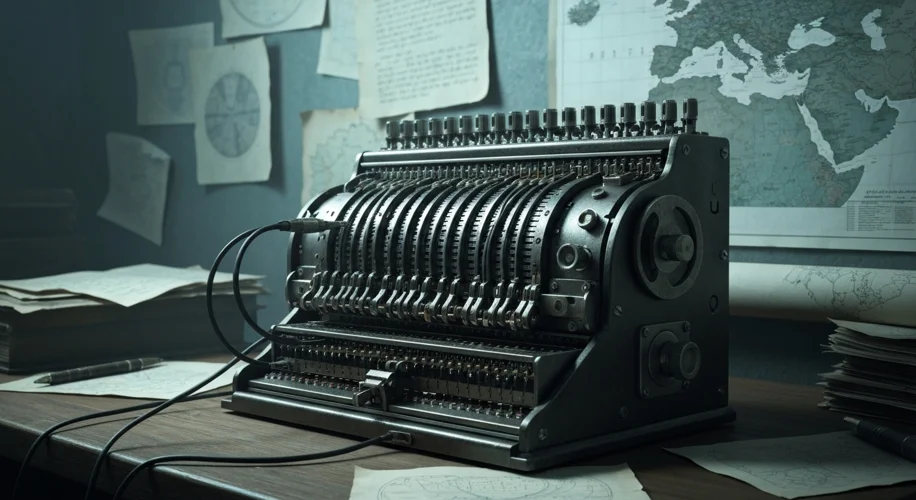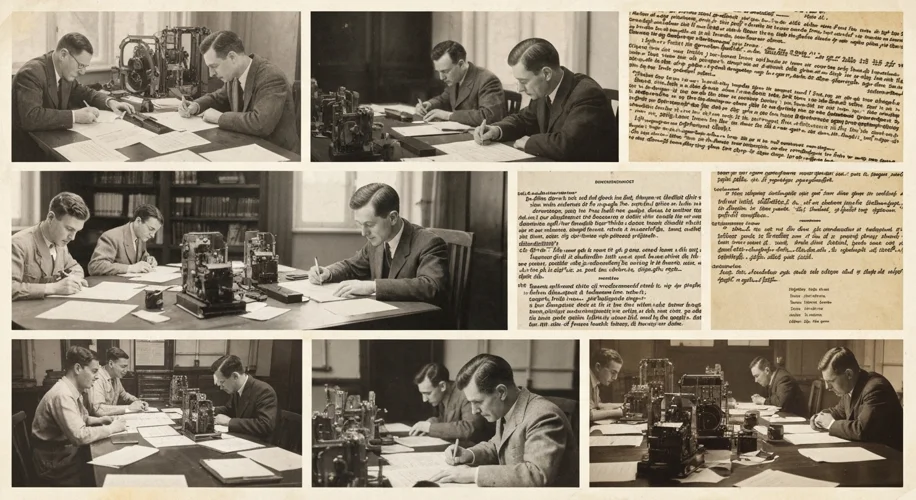In the shadowy annals of World War II, amidst the thunder of artillery and the desperate cries of nations, a silent, intellectual war raged. It was a battle fought not with bullets, but with cogs, rotors, and the intricate dance of electricity. At its heart lay the Enigma machine, a marvel of German engineering designed to render their communications utterly indecipherable.

Nazi Germany, basking in the perceived invincibility of its blitzkrieg tactics, placed immense faith in Enigma. This electro-mechanical marvel, about the size of a typewriter, was far more than a simple cipher device. With its rotating rotors, each encrypting letters in a complex, ever-changing pattern, and a plugboard that further scrambled the electrical pathways, Enigma offered a staggering number of possible settings – a number so vast it was thought to be beyond any hope of breaking.
For years, the German military, particularly the Kriegsmarine (Navy) and the Luftwaffe (Air Force), relied on Enigma to transmit vital operational orders. The messages, fluttering across the waves and through the air, carried the fate of U-boats hunting Allied shipping in the Atlantic, the deployment of fighter squadrons, and the strategic maneuvers of vast armies. The confidence was so absolute that often, messages were sent with little thought to their security, relying solely on the impenetrable nature of Enigma.
But beneath the surface of this technological confidence, a small, dedicated group of minds at Bletchley Park, England, was engaged in a monumental struggle. This unassuming country estate, code-named “Station X,” became the nerve center for Allied codebreaking efforts. Here, mathematicians, linguists, chess champions, and crossword puzzle enthusiasts, individuals often overlooked in the grander military narratives, toiled in secret.
Among the most pivotal figures was Alan Turing, a brilliant mathematician whose insights laid the theoretical groundwork for breaking Enigma. Turing, alongside colleagues like Gordon Welchman, was instrumental in designing the “Bombe,” an electro-mechanical machine capable of testing thousands of Enigma settings at an astonishing speed. The Bombe wasn’t a magic bullet; it required painstaking analysis of intercepted messages to identify potential clues, or “cribs” – known plaintext fragments that could lead to the machine’s daily settings.
Imagine the scene: a captured Enigma machine, its metal cool and unyielding, sitting on a table under the harsh glare of inspection lamps. Imagine the intercepted German messages, painstakingly typed out, their jumbled letters taunting the codebreakers. The tension must have been palpable. Each intercepted message was a potential treasure trove, each deciphered word a victory that could shift the tide of the war.
One of the early breakthroughs came from Polish cryptanalysts, who, before the war, had made significant progress in understanding Enigma’s workings. Their vital early efforts provided a crucial starting point for the Bletchley Park team.
The impact of breaking Enigma, codenamed “Ultra,” was nothing short of revolutionary. The intelligence gleaned from these deciphered messages allowed the Allies to anticipate German movements, reroute convoys away from U-boat wolfpacks, and plan counter-offensives with unprecedented precision. The Battle of the Atlantic, a crucial struggle for Britain’s survival, was significantly influenced by Ultra, saving countless lives and tons of vital supplies.
Consider the D-Day landings in June 1944. The success of this massive undertaking, the invasion of Normandy, was in no small part due to the intelligence gathered from Enigma. Knowing the disposition of German defenses, the location of reserves, and even the intended German responses allowed the Allied commanders to execute their plans with a degree of certainty that would have been impossible otherwise.
The story of Enigma is a profound testament to human ingenuity and perseverance. It highlights how a dedicated group of individuals, armed with intellect and determination, could overcome seemingly insurmountable technological barriers. The intellectual battle waged at Bletchley Park was as critical to the Allied victory as any battlefield engagement. It was a silent war, fought in the hushed rooms of an English estate, that ultimately helped to shape the course of modern history, saving millions of lives and ensuring the eventual defeat of Nazi Germany.

